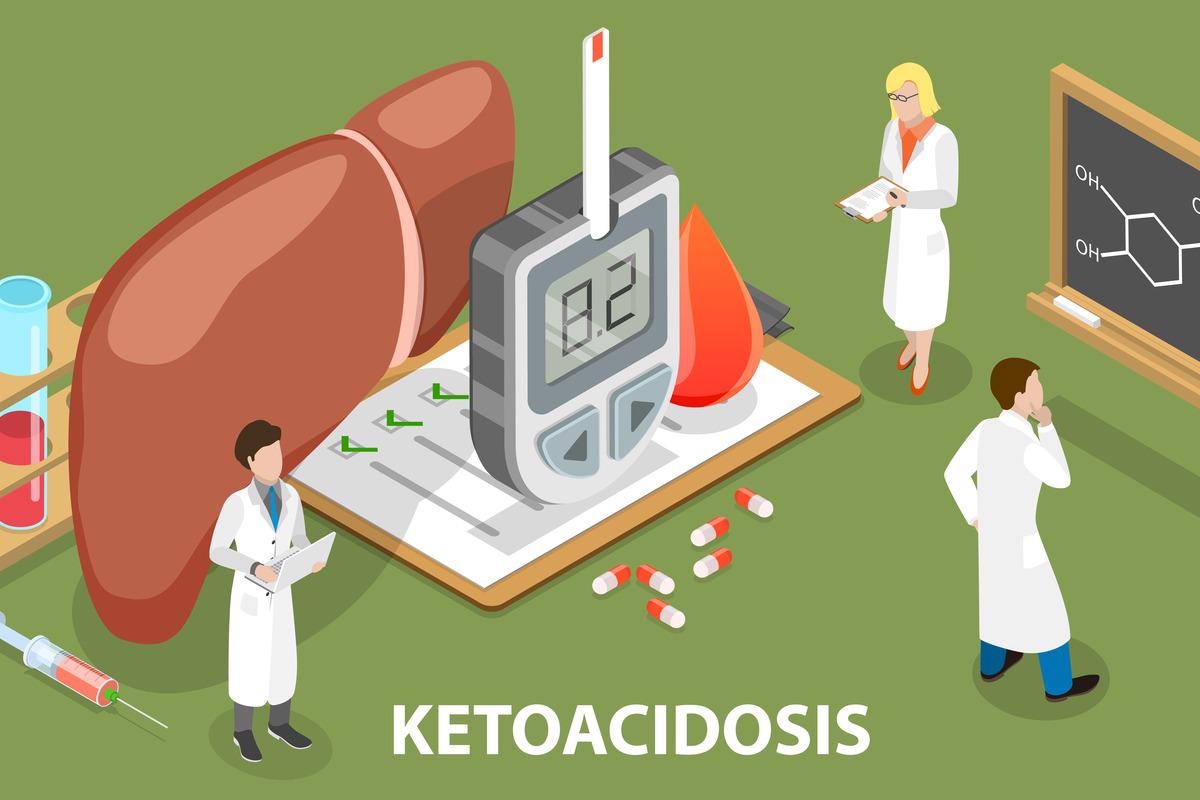A recent study conducted at the Minia University, Egypt, has revealed that the incidence of type 1 diabetes mellitus with severe diabetic ketoacidosis has increased among genetically susceptible children during the coronavirus disease 2019 (COVID-19) pandemic.
 Study: COVID-19 Is A Contributing Risk Factor For Development Of DKA In Typei DM. Image Credit: TarikVision/Shutterstock
Study: COVID-19 Is A Contributing Risk Factor For Development Of DKA In Typei DM. Image Credit: TarikVision/Shutterstock

 This news article was a review of a preliminary scientific report that had not undergone peer-review at the time of publication. Since its initial publication, the scientific report has now been peer reviewed and accepted for publication in a Scientific Journal. Links to the preliminary and peer-reviewed reports are available in the Sources section at the bottom of this article. View Sources
This news article was a review of a preliminary scientific report that had not undergone peer-review at the time of publication. Since its initial publication, the scientific report has now been peer reviewed and accepted for publication in a Scientific Journal. Links to the preliminary and peer-reviewed reports are available in the Sources section at the bottom of this article. View Sources
The study is currently available on the Research Square* preprint server while under consideration at BMC Pediatrics.
Background
Diabetes mellitus is a medical condition of high blood glucose level caused by insulin deficiency and/or loss of insulin functions. In genetically susceptible children, the onset of insulin-dependent type 1 diabetes is primarily caused by T cell-mediated destruction of pancreatic beta cells. Children with severe insulin deficiency are at higher risk of developing diabetic ketoacidosis. In absence of timely treatment, severe ketoacidosis can lead to a deep state of unresponsiveness, coma, and even death.
Various environmental factors, including chemicals and pathogens, are known to trigger immune destruction of pancreatic beta cells. There is evidence suggesting that enterovirus infection can increase the risk of diabetes by triggering the production of diabetes-related auto-antibodies. In COVID-19 patients, severe acute respiratory syndrome coronavirus 2 (SARS-CoV-2) infection has been found to associate with the risk of diabetes.
In the current study, the scientists have investigated the incidence rate of diabetic ketoacidosis in children with new-onset type 1 diabetes during the COVID-19 pandemic.
Study design
The study was conducted on a total of 61 children who were admitted to the pediatric intensive care unit due to type 1 diabetes or due to ketoacidosis between April and October 2021. The patients were subjected to polymerase chain reaction (PCR)-based tests to diagnose SARS-CoV-2 infection.
The blood samples collected from the patients were tested for random blood glucose, differential white blood cell count, hemoglobin A1C (average blood glucose level over past 3 months), and arterial blood gases (HCO3, CO2, and PO2).
Important observations
The presence of ketoacidosis was determined in all 61 patients with type 1 diabetes. A total of 38 patients were diagnosed with diabetic ketoacidosis and 23 patients were without ketoacidosis. Regarding age and gender, no significant difference was observed between patients with and without diabetes ketoacidosis.
The analysis of arterial blood gases revealed a significant difference between patients with and without ketoacidosis. Similarly, a significant difference was observed for blood oxygen saturation and findings of chest CT scan.
A significant difference in severe hyperglycemia and lymphocyte count was observed between the two groups of patients. However, no difference was observed for HBA1C.
Among type 1 diabetes patients who were diagnosed with COVID-19, about 70% had diabetic ketoacidosis and 22% were without the condition. Only 8% of patients showed normal blood glucose levels.
Of all COVID-19 patients with diabetic ketoacidosis, about 63% had new-onset type 1 diabetes. About 58% of the patients required admission to the intensive care unit. Recurrence of diabetes occurred in 63% of patients within 3 months after hospital discharge.
The mortality rates were 10% and 4% among type 1 diabetes patients with and without ketoacidosis, respectively.
Study significance
The study reveals a high prevalence (70%) of ketoacidosis among type 1 diabetes children with COVID-19. The percentage of children with diabetes ketoacidosis requiring admission to intensive care units is also high (58%). Another important finding of the study is that the majority of COVID-19 patients with ketoacidosis present with new-onset diabetes (63%).
As mentioned by the scientists, the high prevalence of new-onset diabetes during the COVID-19 pandemic could be due to many factors, including unavailability or inaccessibility to a routine medical facility, lack of clinic/hospital visits due to fear of contracting COVID-19, or more complex psychological factors.
A high mortality rate has been observed in type 1 diabetes patients with both COVID-19 and ketoacidosis. This finding highlights the need for accurate and timely treatment of children who present with diabetic ketoacidosis symptoms during the COVID-19 pandemic.

 This news article was a review of a preliminary scientific report that had not undergone peer-review at the time of publication. Since its initial publication, the scientific report has now been peer reviewed and accepted for publication in a Scientific Journal. Links to the preliminary and peer-reviewed reports are available in the Sources section at the bottom of this article. View Sources
This news article was a review of a preliminary scientific report that had not undergone peer-review at the time of publication. Since its initial publication, the scientific report has now been peer reviewed and accepted for publication in a Scientific Journal. Links to the preliminary and peer-reviewed reports are available in the Sources section at the bottom of this article. View Sources
Article Revisions
- Jun 14 2023 - The preprint preliminary research paper that this article was based upon was accepted for publication in a peer-reviewed Scientific Journal. This article was edited accordingly to include a link to the final peer-reviewed paper, now shown in the sources section.